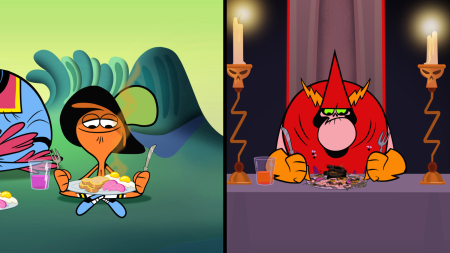Why Wander Over Yonder Epitomizes Disney
Some days I miss 1990s animation. As a 90s kid, I relished every animation that came on public television. Disney Afternoon shows dominated, and I miss the tales of optimism within darkness, and hope.
Then the 2010s rolled onto television. We’ve had a stream of high quality Disney animation. Gravity Falls and Star Vs. The Forces of Evil have received network and audience support, but I want to argue for Wander Over Yonder to get more love. Season two ended abruptly in June 2016, but fans have clamored for Disney to bring back the show for a third season. I wholeheartedly support this campaign. The show represents classic Disney, with modern twists.

Disney Themes
Vintage Disney often took a dark approach to life. We would have shorts that featured scientists kidnapping Pluto, chocolate soldiers melting in the sun, The feature films had wicked stepmothers trying to murder or abuse their wards, boys being turned into braying donkeys, and mother deer shot in the dad of winter.

Remember that this sweet movie . . .

. . . also had this scene
Despite the darkness and despair, however, Disney heroes never gave up hope. They’d find new ways to reach their goals, or to survive. They’d try to find the light within their bad situations. Sometimes they’d need help, from animal sidekicks or fairies, but they would make it.
We’d also get fantastic musical scores and breathtaking animation. Disney had and still has composers that capture pathos and character motivation, as well as singers belting into the studio microphones. One finds it hard to not sing along with these classic melodies, especially as our world seems darker. With some exceptions, of course . . .

The Premise
Wander over Yonder chronicles the titular character’s space adventures. Little orange Wander travels the galaxy with his pal Sylvia, a horse-like alien called Zbornak, and infects planets with kindness. He often stops planetary conquerors with silliness and music. Sylvia tries to keep conquerors from killing Wander, while living up to his ideals.
Wander on the surface is an optimistic, banjo-toting alien that believes in always helping. He represents an ideal that Sylvia tries to emulate, often with mixed results. A good portion of the show’s comedy revels in how Wander’s kindness can lead to unintended consequences, such as physical injuries or overworked heroes.
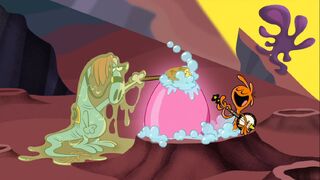
We have Lord Hater and Commander Peepers as a deuteragonists and occasional villains. Lord Hater has the strength and know-how to conquer the galaxy, but lacks the temperament with Wander distracting him. Commander Peepers has the focus and undying loyalty to Lord Hater, but lacks the stature to lead an invasion with competence. We also get adorable Watchdogs, Hater’s henchmen, who would rather spend their days making enchiladas.
In addition to these four lovelies, we have a round of one-shot characters that steal the show: Westley, a Watchdog lackey from “The Little Guy,” wins people’s hearts for trying his best to learn evil and then good. Captain Tim, a heart-eating Arachnomorph, shows love for aliens by chomping on them. Dr. Screwball Jones, a PhD-toting banana with a clown wig, wants to force everyone to be happy while Wander would rather give others the choice.
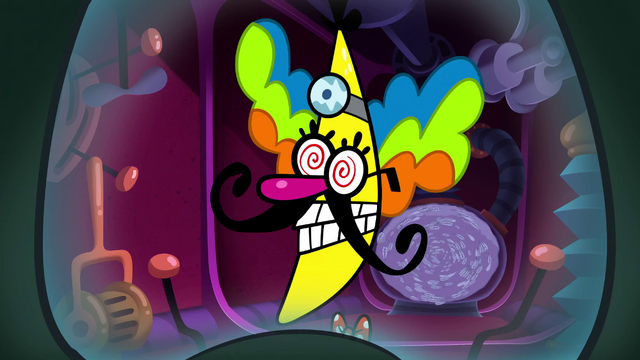
The Story
Season one shows Wander annoying Lord Hater, to stop his evil plans. Hater then loses his focus on conquering planets and planting flags. He and Peepers engage in a galaxy hunt to find Wander and thwart him. Peepers would rather ignore the little guy, but his boss Hater refuses to turn away from Wander. In the meantime, Sylvia and her pal travel the galaxy, engaging in one well-meaning mishap after another. This led to many silly episodes, and it took a while for the show to find its voice.
Then we arrive at season two. A new villain, Lord Dominator, shows up with a new agenda. She doesn’t want to conquer planets, and Wander’s kindness has no effect on her. Sylvia only hopes that she can keep Wander safe when he switches tactics.
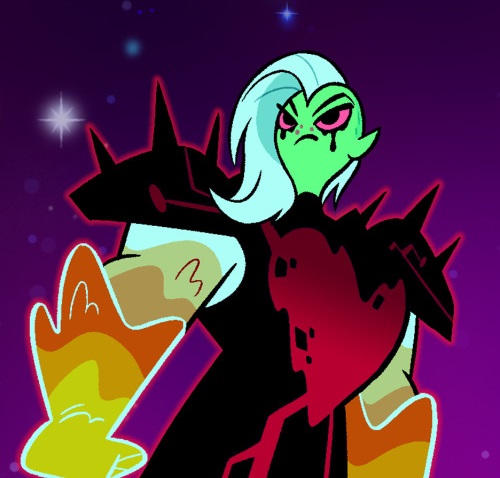
As you may imagine, Dominator doesn’t bend to Wander’s strategies, but Hater does. Sylvia and Peepers beg to differ, and are surprised that they can agree. As the four clash and ally at varying points, they learn more about themselves, how to work together, and how to grow into better people.
Like vintage Disney, season two asks if one can find hope in the midst of despair. Wander comes close to tears several times, but he reaffirms that he won’t give up hope. He believes that kindness and friendship can win. Sylvia wants to go for the pragmatic approach, but can’t destroy Wander’s pacifism. Hater in the meantime battles his insecurities and arrogance to save the galaxy, as Peepers hopes they can conquer it. We see very different responses to the end of the world, and Dominator gets some interesting depth as well.
The Art Style
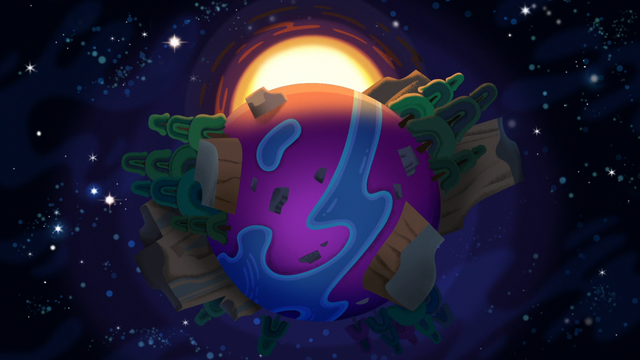
The show homages the lighter Disney style as well as Dr. Seuss. Wander and Sylvia have round, curved shapes, yet texture to their different furs. Sylvia can toughen up to fight, but she usually remains soft in image and in personality around Wander. Hater and Peepers, in contrast, have very triangular and pointed shapes, and only soften when they feel happily vulnerable.
One also has to admire the effort put into designing this galaxy. We see shout-outs to Japan, abandoned spaceships that could come out of, and even dark forests with eerie mimes. No two planets are the same, and no two villains are either. The characters constantly interact with their backgrounds, the way vintage Disney characters did.
The Music

Andy Bean’s banjo and Jack McBrayer’s singing add so much atmosphere to this show. It also pays homage to Disney’s Silly Symphonies; Wander will often burst out into song when inspired, for example, as will other characters. Even Sylvia gets her chance to shine, being played by the talented April Winchell. We also get a polka number when Weird Al guest-stars, and Wander never fails to amuse with a banjo counterattack.
A musical episode, “My Fair Hatey,” became a darling with its references to Meatloaf, old-style musicals, and killer villain songs. Hater undergoes necessary character development, while Wander gets a harsh lesson about shipping. In fact, the show’s popularity increased after the episode aired and people discovered Dominator’s number “I’m the Bad Guy“.
In Short

Disney, I hope that we get the show back. We don’t often get animation that perfectly encapsulates your legacy and impact. Wander’s optimism and Peepers’ determination are inspiring. We also don’t often get stories with sympathetic villains that sometimes take over the narrative.
I hope the show returns soon. Season three shows promise, with exploring Hater’s origin and even more threatening villains. I know I’ll be rooting for Peepers to spread evil, and for him to have more buddy talks with Sylvia. We also can never get enough of Wander being an ideal, and Hater being who we actually are.
